- Home
- About the Journal
- Peer Review
- Editorial Board
- For Authors
- Reviewer Recognition
- Archive
- Contact
- Impressum
- EWG e.V.
Cite as: Archiv EuroMedica. 2022. 12; 6: e1. DOI 10.35630/2022/12/6.1
State measures to support motherhood and childhood in Russia aimed at increasing the birth rate: a monthly allowance for child care for non-working women, an increase in the size of the pregnancy and childbirth allowance and a monthly allowance for child care for working women, the introduction of a birth certificate and tax benefits are reflected in morbidity rates. In the course of the analysis, it was established that there was a steady downward trend in indicators of maternal morbidity in the Republic of Ingushetia (Russia) in 2016-2020 in general, and in individual nosological forms: anemia, threatened miscarriage, diseases of the urinary tract, fetal pathologies, venous complications, cardiovascular conditions, maternal endocrine disorders. Hypertension, preeclampsia and Rh immunization did not show significant dynamic differences, and diabetes mellitus noticeably and significantly declined. To evaluate these activities, a systematic, dynamic and prospective analysis of the health status in women of childbearing age who are actively involved in childbearing is important. The medical assessment of the effectiveness of support measures is the health indicators of women who have given birth to children. In this regard, it is actual to calculate and dynamically assess the rates of maternal morbidity.
Keywords: women's health; maternal morbidity; nosological forms; diabetes; childbearing age
Measures of state support in Russia for motherhood and childhood programs are laid down in strategic National and Federal programs and require systematic analysis and evaluation to determine the effectiveness of target budget funds. In this regard, the most important issue is the calculation, analysis and assessment of the incidence of pregnant women and birthing mothers in the pre-reform period and during the period of the National Health and Demography projects to determine trends in indicators - criteria for assessing the medical effectiveness of state programs to support motherhood and childhood. In addition, there is a persistent social disadvantage of some groups of the female population, as well as insufficient use of all modern achievements in perinatal medicine [1-5]. It was these circumstances that determined the purpose of the study - to determine the dynamics of morbidity in birthing mothers and confirm its stability [6-10].
The aim of the study: is to determine the dynamics of the incidence of childbirth and confirm its resistance.
The work used methods of non-parametric statistics, with the help of which the incidence of birthing mothers who gave birth to children in Russia, in the Republic of Ingushetia (Russia) in 2016-2020 was assessed. Morbidity rates for individual nosological forms were calculated, time series were analyzed, regression coefficients, determinations, and the probability of an error-free forecast were calculated to confirm the presence of trends in dynamic series. The overall morbidity, morbidity for individual nosological groups was calculated. Morbidity was calculated as an intensive indicator - an indicator of the frequency, level, prevalence of processes, phenomena occurring in a certain environment, showing the frequency of occurrence of the phenomenon under study in the environment that produces this phenomenon. The absolute number characterizing the size of the phenomenon was divided by the absolute number showing the size of the environment in which the phenomenon occurred, and multiplied by 1000, expressed in ppm. Graphically intensive indicators were presented in the form of bar charts.
An assessment of the dynamics of the morbidity rates in women in Ingushetia who gave birth to children both in the pre-reform period (from 2016 to 2019) and during the period of the National Projects Health and Demography (from 2019 to the present) is presented. So, in the interval from 2016 to 2020, there was a significant decrease in the incidence of childbirth, as evidenced by:
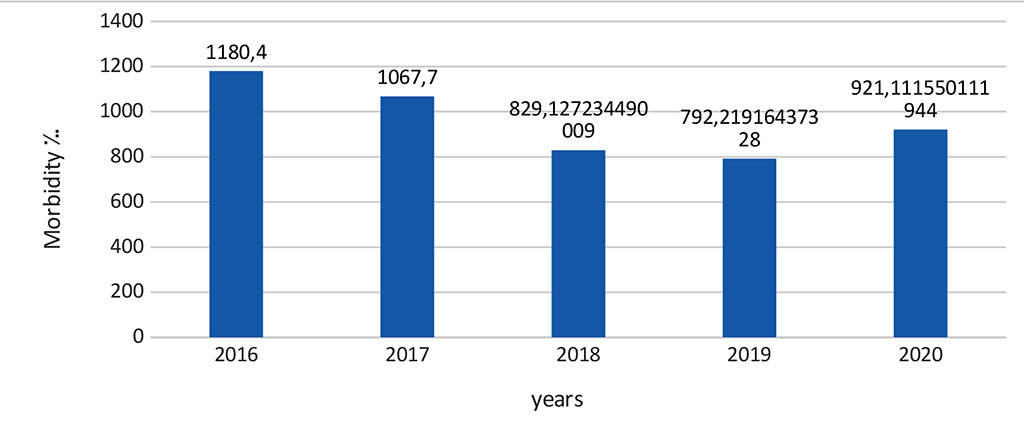
Figure 1. The maternal morbidity in the Republic of Ingushetia in 2016-2020 (%)
Over the course of five years, the rate of maternal anemia declined steadily. The correlation coefficient (0.87), determination coefficient (0.76), significance coefficient (0.05) and regression coefficient (-0.04) confirmed this trend (Fig. 2).
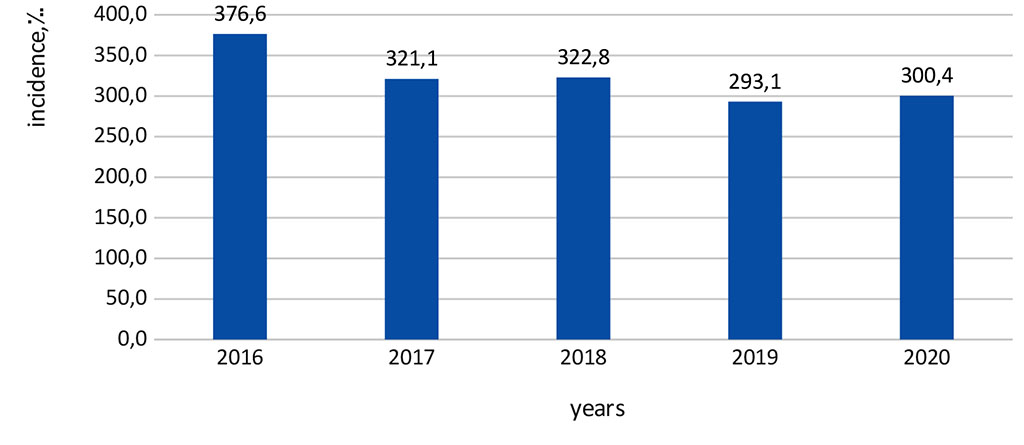
Figure 2. The incidence of anaemia in pregnant women in the Republic of Ingushetia in 2016-2020 (%)
There was a significant decrease in threatened miscarriage from 304.9% to 239.6% in the interval from 2016 to 2020. Coefficients: correlations (0.87) characterized the presence of a strong relationship between the signs, determination (0.76) indicated the presence of a pronounced decrease in the indicator, regression (-18.02) reflected the five-year average value of the decrease in the value of this nosological group, and the reliability coefficient ( 0.05) confirmed the presence of a significant difference between the studied parameters) (Fig. 3).
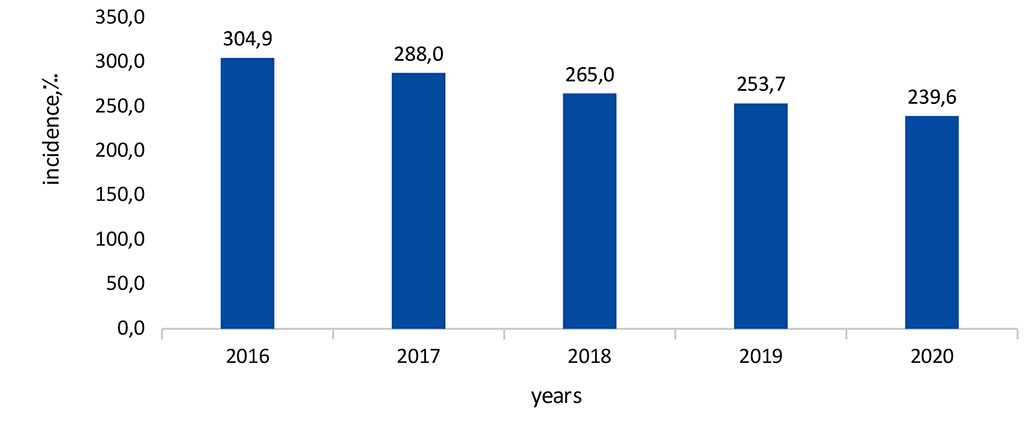
Figure 3. The threat of pregnancy termination among birthing mothers in the Republic of Ingushetia in 2016-2020 (%)
The incidence rate of the genitourinary system in birthing mothers decreased from 138.9% о to 114.% о. The correlation coefficient was 0.79, characterizing a close relationship, the determination coefficient (0.63) confirmed the decrease in the indicator, the regression coefficient showed a decrease in the incidence rate by 7.6, however, the probability of an error-free forecast was 0.1, which is higher than 0.05 (Fig.4).
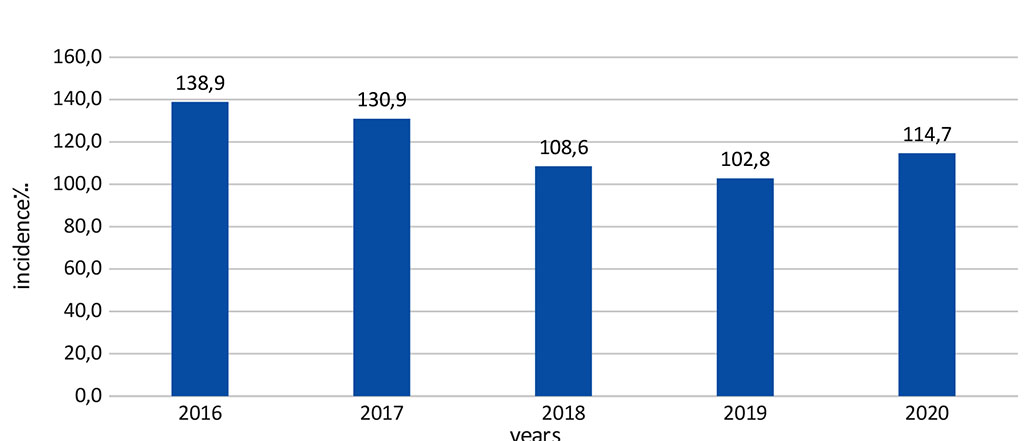
Figure 4. Diseases of the genitourinary system in birthing mothers in the Republic of Ingushetia in 2016-2020 (%)
Fetal pathologies in 2016-2020 steadily decreased from 126.1%o to 84.6%o, as evidenced by the coefficients of correlation (0.95), determination (0.9), regression (-11 .34), significance (significance) (0.01) (Fig.5).
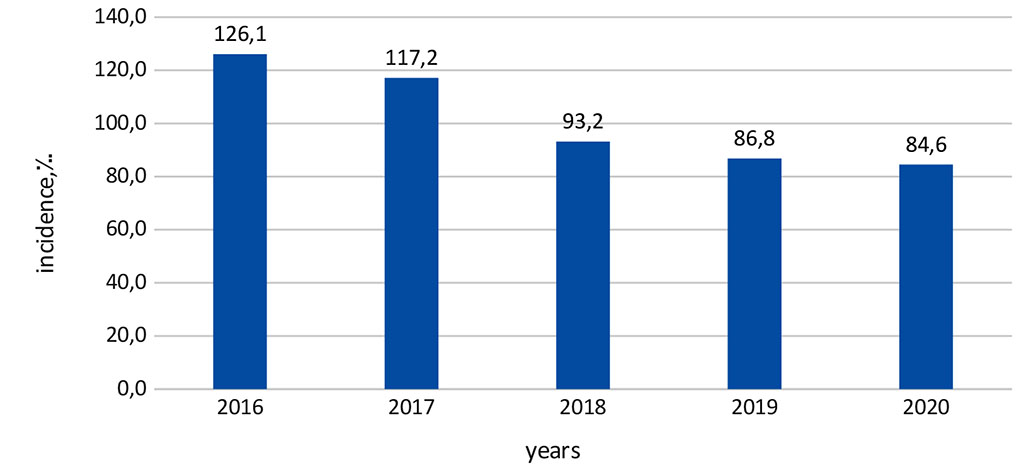
Figure 5. Fetal pathologies in the Republic of Ingushetia in 2016-2020 (%)
Venous complications insignificantly and unconfidantly increased from 58.8%o to 66.9%o: coefficients of correlation (0.55), determination (0.3), regression (1.5), significance (significance) (0.03) (Fig.6).
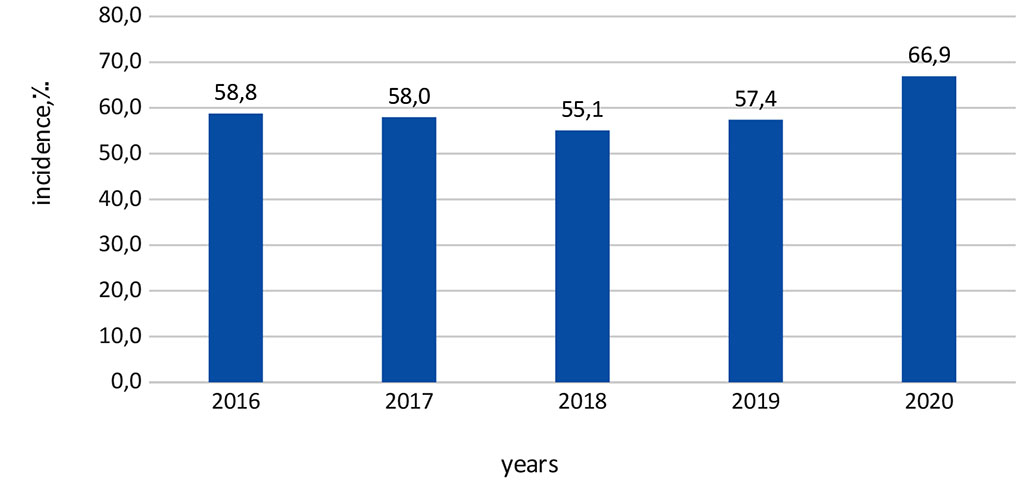
Figure 6. Venous complications in birthing mothers in the Republic of Ingushetia in 2016-2020 (%)
The indicator of diseases of the circulatory system significantly and confidently decreased from 66.1%o to 41.7%, which was confirmed by the values of the coefficients of correlation (0.9), determination (0.814), regression (-5.7), significance (reliability) (0.03) (Fig.7).
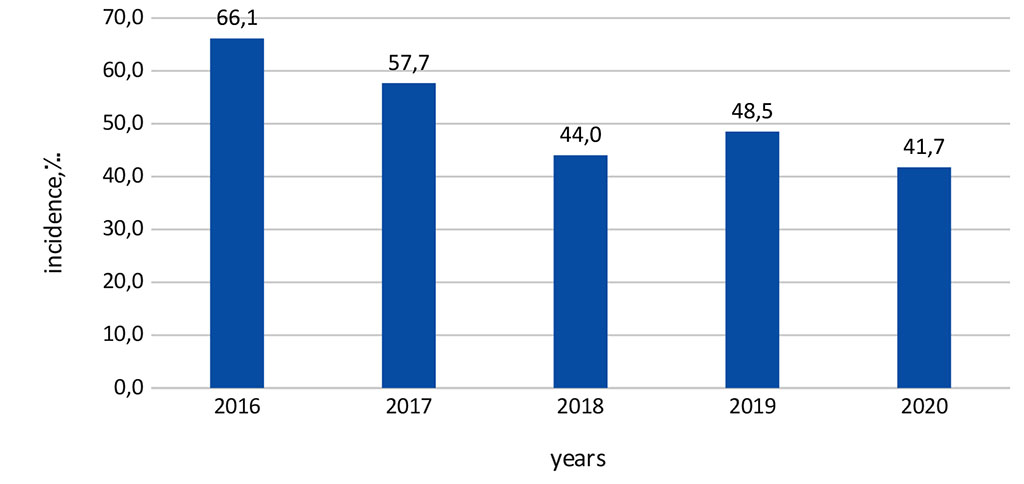
Figure 7. Maternal Cardiovascular Conditions in the Republic of Ingushetia in 2016-2020 (%)
Endocrine diseases significantly decreased from 53.1 ؉ to 36.6%, which was confirmed by the values of correlation coefficients (0.79), determination (0.62), regression (-3.17), significance (validity) (0.05).
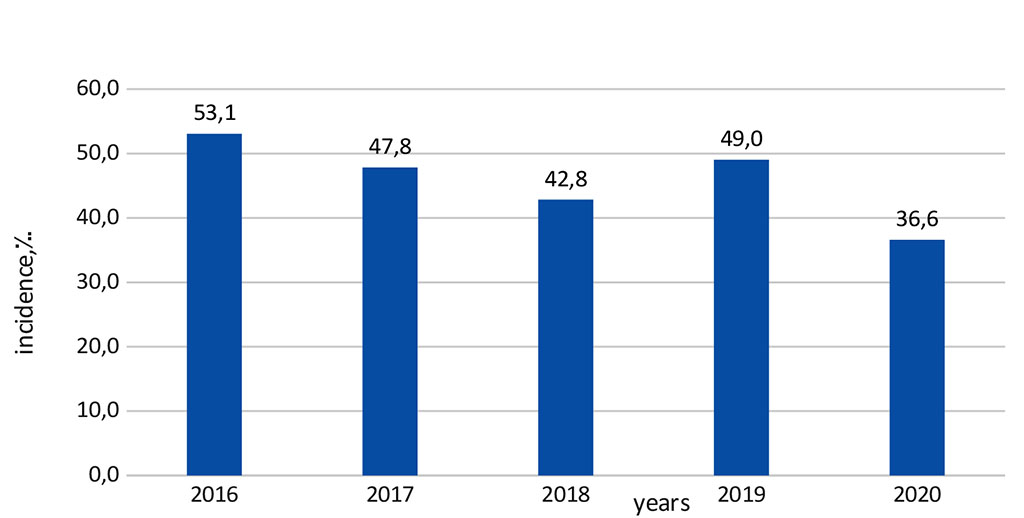
Figure 8. Endocrine diseases in birthing mothers in the Republic of Ingushetia in 2016-2020 (%)
The hypertension score decreased slightly unreliably from 20.3% о to 18.4% о, which was confirmed by the coefficients of correlation (0.7), determination (0.49), regression (-3.17), significance (validity) (p ≥0,05).
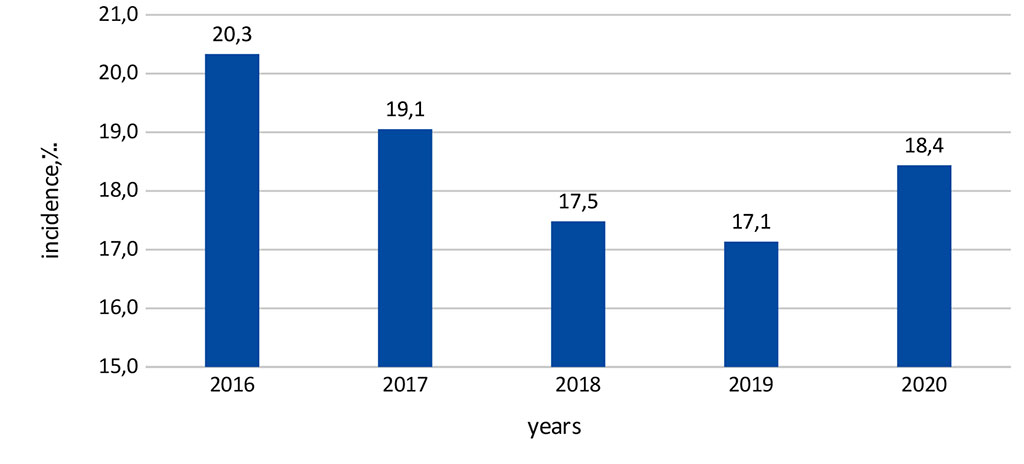
Figure 9. Maternal Hypertension in the Republic of Ingushetia in 2016-2020 (%)
The rate of moderate preeclampsia changed insignificantly and unreliably from 7.3% in 2016, increased to 11.1% by 2017 and decreased by 2020 to 7.1% . Correlation coefficients (0.23), determination (0.05), regression (-2.3), significance (validity) (p ≥0,05) confirmed the presence of insignificant differences.
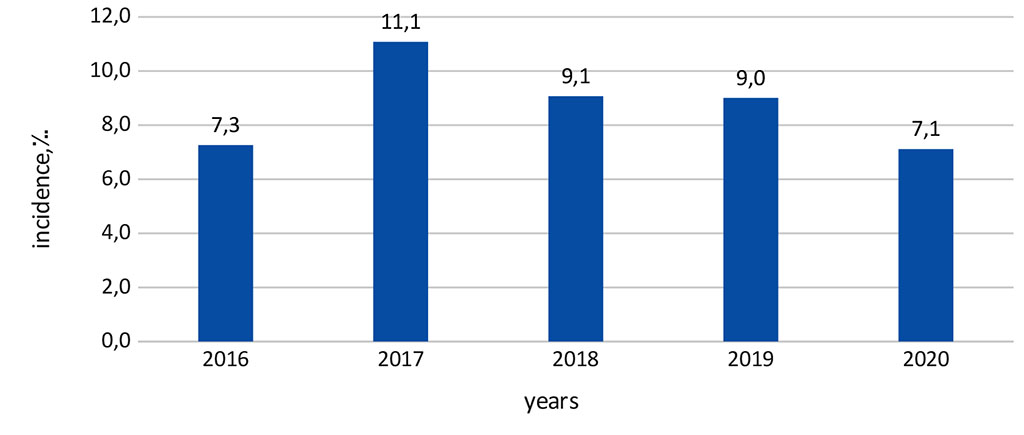
Figure 10. Moderate preeclampsia in the Republic of Ingushetia in 2016-2020 (%)
The rate of severe preeclampsia decreased significantly from 3.8% о to 1.1%. Correlation coefficient (0.7), which characterized a close relationship between signs, determinations (0.6), which confirmed a decrease in the indicator, regression (-0.5), which characterized a 5-year mean change in the incidence rate, significance (validity) (p ≥0,05) confirmed the presence of insignificant differences.
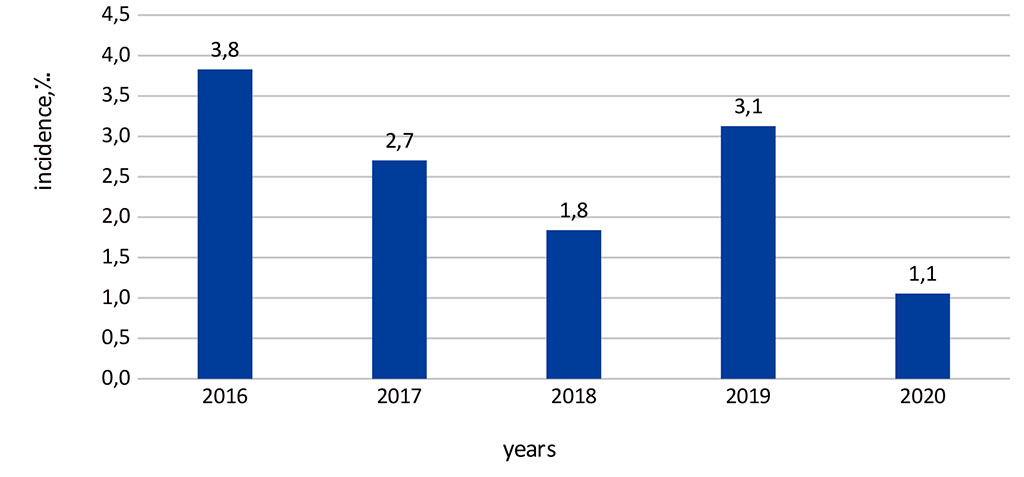
Figure 11. Severe preeclampsia in women who gave birth in the Republic of Ingushetia in 2016-2020 (%)
The rate of Rh-immunization decreased significantly from 23.4%о to 7.1%о. Correlation coefficient (0.84) characterizing the close relationship, determinations (0.72) confirming the decrease in the indicator, regressions (3.99) characterizing the value of the change in the incidence rate on average over 5 years, significance (validity) (p ≤ 0.05) confirmed the presence of insignificant differences.

Figure 12. Rh immunization in birthing mothers in the Republic of Ingushetia in 2016-2020 (%)
The indicator of diabetes mellitus significantly increased by 3 times: from 1.2 to 2.9% of about. Correlation coefficients (0.97), determination (0.6), regression (-0.39), significance (validity) (p ≤0,05) confirmed that there were significant differences.
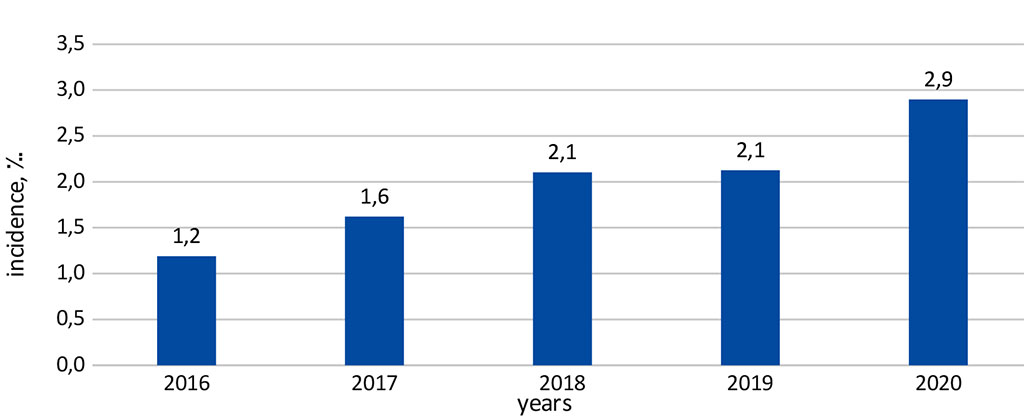
Figure 13. Diabetes mellitus in maternity patients who gave birth in the Republic of Ingushetia in 2016-2020 (%)
An assessment of the dynamics of maternal morbidity in the Republic of Ingushetia showed its decrease in the period from 2016-2020. Similar results were also found in previous studies that analyzed the morbidity in pregnant women, women in labor and birth [2, 5].
Thus, an in-depth statistical analysis of the maternal morbidity testified to the presence of predominantly positive medical and demographic trends that characterize the health status of birthing mothers and manifested themselves especially clearly during the period of approbation of state support measures for motherhood and childhood. Steady downward trends were followed in the Republic of Ingushetia (Russia) in 2016-2020 both in general, and for individual nosological forms: anemia, threatened miscarriage, diseases of the genitourinary system, fetal pathologies, venous complications, maternal cardiovascular conditions, endocrine diseases in childbearing women. Hypertension, preeclampsia and Rh immunization did not show significant dynamic differences, and the disease of civilization - diabetes mellitus significantly and confidently increased.